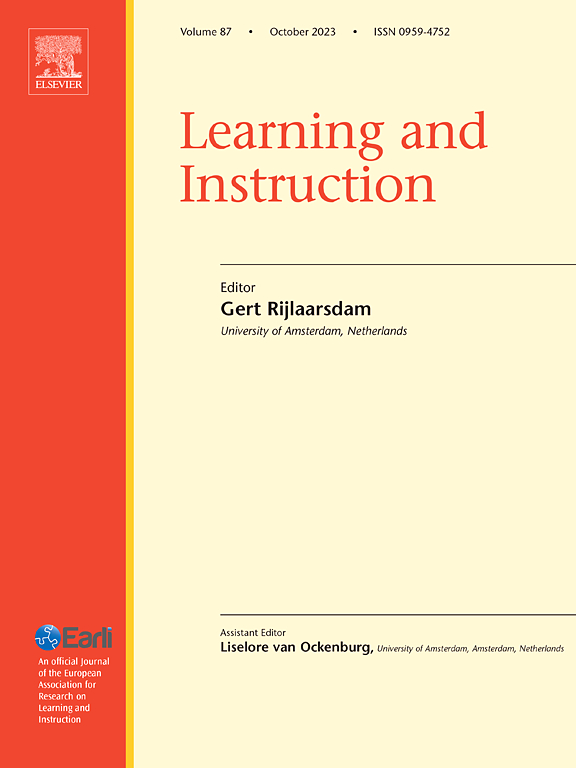Differentiated instruction on undergraduate students based on classification and prediction of students performance using PSO-BP neural network
IF 4.9
1区 教育学
Q1 EDUCATION & EDUCATIONAL RESEARCH
引用次数: 0
Abstract
Background
Differentiated instruction (DI) is increasingly recognized as a strategy to meet the diverse learning needs of students by adapting teaching methods to individual characteristics. However, accurate student classification remains a challenge, limiting DI's effectiveness.
Aims
This study aims to develop a more precise, data-driven classification method to enhance DI implementation and improve learning outcomes.
Samples
The study utilized a dataset of 1386 second-year Mechanical and Automotive Engineering undergraduates for model training and validation. An independent external test set of 150 students from the same discipline, not included in the initial dataset, was employed to empirically evaluate the implementation of DI.
Methods
We integrated educational data mining with a Particle Swarm Optimization-Backpropagation (PSO-BP) neural network to classify and predict student performance. Key factors influencing academic performance, including past grades, student engagement, and teacher-student interaction, were analyzed. Pearson correlation and multicollinearity testing were employed to ensure model robustness, and K-fold cross-validation ensured accuracy.
Results
The PSO-BP model significantly improved classification accuracy, particularly in 3-Classes and 5-Classes groupings. Students receiving DI based on these refined classifications demonstrated notable improvements in academic performance compared to those classified using traditional methods.
Conclusion
This study offers a scalable, data-driven solution for student classification in DI, addressing the limitations of current models and providing a practical framework for educational institutions to tailor learning experiences, ultimately enhancing student outcomes and teaching efficacy.
基于PSO-BP神经网络分类与预测的大学生差别化教学
差别化教学是一种适应学生个体特点,满足学生多样化学习需求的教学策略。然而,准确的学生分类仍然是一个挑战,限制了DI的有效性。本研究旨在开发一种更精确的、数据驱动的分类方法,以加强DI的实施并改善学习成果。本研究利用1386名机械与汽车工程二年级本科生的数据集进行模型训练和验证。采用来自同一学科的150名学生的独立外部测试集(未包括在初始数据集中)对DI的实施进行实证评估。方法将教育数据挖掘与粒子群优化-反向传播(PSO-BP)神经网络相结合,对学生成绩进行分类和预测。研究分析了影响学习成绩的关键因素,包括过去的成绩、学生的参与度和师生互动。采用Pearson相关检验和多重共线性检验确保模型稳健性,K-fold交叉验证确保准确性。结果PSO-BP模型显著提高了分类精度,特别是在3类和5类分组中。与使用传统方法分类的学生相比,接受基于这些改进分类的DI的学生在学习成绩上有显著提高。结论本研究提供了一种可扩展的、数据驱动的DI学生分类解决方案,解决了现有模型的局限性,为教育机构量身定制学习体验提供了一个实用框架,最终提高了学生的学习成果和教学效果。
本文章由计算机程序翻译,如有差异,请以英文原文为准。
求助全文
约1分钟内获得全文
求助全文
来源期刊

Learning and Instruction
Multiple-
CiteScore
11.30
自引率
4.80%
发文量
109
期刊介绍:
As an international, multi-disciplinary, peer-refereed journal, Learning and Instruction provides a platform for the publication of the most advanced scientific research in the areas of learning, development, instruction and teaching. The journal welcomes original empirical investigations. The papers may represent a variety of theoretical perspectives and different methodological approaches. They may refer to any age level, from infants to adults and to a diversity of learning and instructional settings, from laboratory experiments to field studies. The major criteria in the review and the selection process concern the significance of the contribution to the area of learning and instruction, and the rigor of the study.
 求助内容:
求助内容: 应助结果提醒方式:
应助结果提醒方式:


